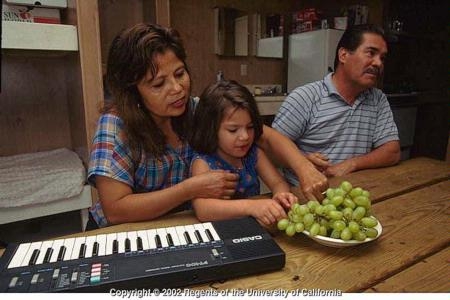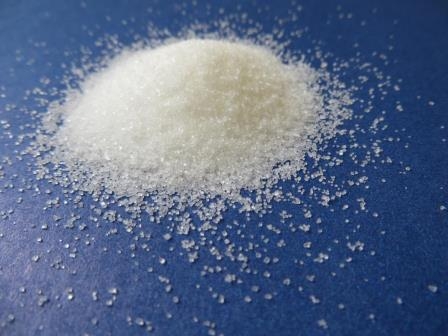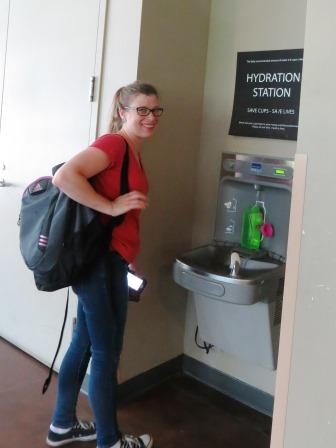Posts Tagged: Lucia Kaiser
The health impacts of sugary drinks
Americans consume nearly three times the recommended amount of sugar every day, and about half the U.S. population consumes sugary drinks on any given day.
Excess sugar consumption contributes to obesity, tooth decay, early menses in girls, and chronic diseases including diabetes and heart disease. To add to the damage, doctors are now attributing too much dietary sugar to non-alcoholic fatty liver disease, which can lead to cirrhosis of the liver.
It's enough to make you sit up and listen to the warnings about too much soda, sugary drinks, and sugar-laden processed foods.
What is a sugary drink? It's any beverage, more or less, with added sugar or other sweeteners, including high-fructose corn syrup. The long list of beverages includes soda, lemonade, fruit punch, powdered fruit drinks, sports drinks, energy drinks, sweetened coffee and tea drinks, and many flavored milk products.
People are becoming aware of the concerns of too many sugary drinks, and steps are being taken to reduce their consumption. Some K-12 school districts across the nation are limiting sales of soda, and the City of Davis will soon require that restaurants offer milk or water as a first beverage choice with kids' meals.
UC Cooperative Extension, the county-based outreach arm of UC Agriculture and Natural Resources, is partnering with health agencies and conducting public service programs for youth and families about sugary drinks. UC ANR Cooperative Extension in San Joaquin County recently presented a "Rethink Your Drink" parent workshop in conjunction with the county's Office of Education, and Solano County Cooperative Extension is working with the California Department of public health to engage youth in "Rethink Your Drink" programs.
Lucia Kaiser, UC ANR Cooperative Extension nutrition specialist, co-authored a policy brief about California's rural immigrants who have poor-quality tap water, or perceive tap water to be bad. Kaiser, who is also a nutrition faculty member at UC Davis, noted that studies have found a link between water quality and consumption of sugary drinks, which is a concern in low-income communities that don't have resources for clean water.
As of this month (July 2015), UC San Francisco is no longer selling sugary beverages on its campus, and UCSF has launched a Healthy Beverage Initiative. UC Berkeley held a Sugar Challenge this year, and UC Davis is conducting a Sugar Beverage Study on women.
Scientists at UC San Francisco, UC Davis, UC ANR's Nutrition Policy Institute, and other universities are studying the health effects of sugar and implementing health outreach programs. And UC's Global Food Initiative is building on the momentum of excessive sugary-drink consumption.
A healthy alternative to sugary drinks? Water, of course. Many universities and public places are replacing traditional drinking fountains with water stations so that students and others can fill their own bottles and have water “on the go.” And UC President Janet Napolitano is working with the Nutrition Policy Institute on a bold and sensible request to place water on the USDA's MyPlate nutrition guidelines.
The next time you're thirsty, drink wisely to your good health.
Additional information:
- Sugary drinks are hiding under a 'health halo'; UC ANR Food Blog, Aug. 6, 2014
- Nutrition Policy Institute, UC ANR
- UCSF Launches Sugar Science Initiative, a national initiative
- Learn the Facts about Sugar: How Sugar Impacts your Health, UCTV Video, May 2015
- The Hidden Costs of Sugar; UCSF news release, Nov. 2014
- Why Sugar? Why Now?, blog article by Laura Schmidt, UCSF
Food assistance and education combine to ease food insecurity
Celebrities have taken the “food stamp challenge,” trying to feed themselves on a budget equivalent to federal food benefits for the poor. Most have failed, but UC Agriculture and Natural Resources (UC ANR) has found a way to help low-income families successfully stretch their food dollars and eat healthier while receiving food assistance.
The curriculum, called “Plan, Shop, Save & Cook,” was adapted for UC CalFresh nutrition education by UC ANR Cooperative Extension academics. The program, offered in 31 California counties, is proven to help recipients of Supplemental Nutrition Assistance Program (SNAP, formerly food stamps) eat healthier and avoid running out of food by the end of the month. In California, SNAP is known as CalFresh.
The proof stems from an analysis of pre- and post-program surveys of nearly 4,000 adults who completed the four-part “Plan, Shop, Save & Cook” course. Researchers concluded that food assistance combined with nutrition and resource management education reduces food insecurity in low-income families. The results were published in the Journal of Nutrition Education and Behavior.
Plan, Shop, Save & Cook was implemented in California in 2011. From 2011 to 2013, educators in 15 counties asked participants to fill out a brief survey before and one month after completing the four-week course. The survey aimed to determine whether they were using key strategies shared in the classes, including planning meals, using a shopping list, comparing prices, reading labels, thinking about healthy choices and eating varied meals.
“We confirmed that our program helps educate and motivate participants, leading to healthier eating,” said Lucia Kaiser, UC ANR Cooperative Extension specialist based in the Department of Nutrition at UC Davis. “Increasing resource management skills – the ability shop smart and read food labels – is important to reducing food insecurity.”
Kaiser, the study's lead author, also pointed out that receiving the supplemental food benefits is a critical factor in addressing food insecurity.
“Families need SNAP and access to healthy foods in their neighborhoods,” Kaiser said. “The people in our study who were receiving food assistance were eating the best. It's really important to help eligible people get enrolled and receive food assistance.”
In the United States, 14.5 percent of households are “food insecure” – they don't have access to enough food for an active, healthy life for all household members. Among those below the income eligibility cutoff for SNAP, the percentage of food insecure households is considerably higher. Food insecurity has been associated with inadequate nutrient intake, poor mental and physical health, substandard economic performance, increased risk of chronic disease, poor psychological cognitive function and obesity.
“It may seem counter-intuitive, but research has shown that body mass index is greater in households with lower socio-economic status,” Kaiser said. “Food insecurity and obesity may coexist because the least expensive foods are often lowest in nutrients and highest in calories, and in low income areas, healthy food is not always available.”
A higher level of food assistance benefits may allow families to purchase more fruits, vegetables, whole grain products and lean dairy and protein foods. Effective education also contributes to these healthy eating habits. The Plan, Shop, Save & Cook classes are offered to small groups of adults in community settings and include skill-building activities, such as writing a menu and comparing it to dietary recommendations. Participants taste low-cost healthy foods and receive recipes to try at home.
For more information about Plan, Shop, Save & Shop contact a county UC ANR Cooperative Extension office.
An initiative to maintain and enhance healthy families and communities is part of the UC Division of Agriculture and Natural Resources Strategic Vision 2025.
Unappealing tap water in immigrant communities may deter healthy drink choices
Having established a link between obesity and sugary beverages, doctors and nutritionists recommend that children instead drink plain tap water. In virtually all of the United States and California, tap water is the best drink available for good health.
However, a team of UC Cooperative Extension and UC Davis scientists have found that low-quality tap water in some rural immigrant communities could be an obstacle to making this healthy dietary change.
The study was conducted in conjunction with a five-year research and outreach project underway in Firebaugh and San Joaquin, small communities in the San Joaquin Valley with high Mexican-American populations. The researchers are investigating whether a community-based intervention – involving nutrition education, a monthly voucher of $25 to purchase fruit and vegetables, and a physical activity program – can help prevent childhood obesity in Californians of Mexican descent living in low-income rural communities. UC Agriculture and Natural Resources and UC Davis were recipients of a $4.8 million National Institute for Food and Agriculture grant to carry out this research.
Twenty-seven mothers in the study shared with the researchers whether they use tap water and gave their perceptions of tap water quality. In addition, the researchers assessed local water quality by the frequency of violations reported by Cal EPA and contaminant-level data from the California Department of Public Health.
All 27 mothers said they avoid drinking tap water due to unpleasant taste, dirty or yellow appearance, excessive iron or general “contamination.” Most of the women rely instead on bottled, and to a lesser extent, home filtered water for drinking and cooking.
“This cost is an extra burden for these families, many of whom have limited incomes,” said Lucia Kaiser, UCCE specialist in the Department of Nutrition at UC Davis.
The mothers shared in interviews that at least 38 percent of their children aged 3 to 8 years old drank sugar-sweetened beverages – such as soda, energy drinks, powered drink mixes or fruit punch – more than two or three times per week.
Two state-regulated water systems serve the majority of people in Firebaugh and San Joaquin. The rest rely on at least 11 small public or private systems. All of the 13 systems have had monitoring violations in the last 12 years. Two have had reporting violations, indicating that they either did not test for contaminants or did not report their findings.
The mothers' perception that tap water was unappealing or contaminated was confirmed when the researchers took a close look at regulatory analyses reports from previous years. There were low-levels of arsenic detected, which fell above the benchmark for safe drinking water in the U.S. The analyses also detected high levels of manganese and iron, which are considered secondary contaminants and do not have enforceable limits set by the EPA. However, the World Health Organization has set health benchmarks for manganese, which were exceeded in some samples.
“The neurotoxic effects of manganese and chronic exposure to low levels of arsenic warrant further study,” Kaiser said. “Even if it's not dangerous, the high level of manganese and iron can give the water an off taste.”
Regardless, removing the contaminants may not matter if perceptions and drinkability are not improved. A possible solution is better communication.
“A simple step could be sending easy-to-understand water quality reports to all residents,” Kaiser said. “Sending reports to renters in addition to property owners and in Spanish as well as English will help raise awareness about the safety of local tap water.”
The study was funded in part by the UC Davis Center for Poverty Research, which developed a two-page policy brief outlining the research findings. UC Davis doctoral student Caitlin French was the main author. Other contributors, in addition to Kaiser, were post-doctoral researcher Rosa Gomez-Camacho, UCCE nutrition, family and consumer sciences advisor Cathi Lamp and UC Davis nutrition professor Adela de la Torre.
In the policy brief, the authors included some additional suggestions to address the issue:
- Increase state funds to agencies working to identify who is at risk in order to bring more water systems into compliance
- Provide subsidies for home water filters
- Provide subsidies to private well owners in exchange for testing reports
- Step up outreach to owners of targeted private water systems in known problem areas
- Provide funding for additional research to inform outreach messages about substituting tap water for sugar-sweetened beverages
An initiative to maintain and enhance healthy families and communities is part of the UC Division of Agriculture and Natural Resources Strategic Vision 2025.
$4.8 million study fights childhood obesity in Central Valley
UC Davis professor Adela de la Torre, a national expert on Chicano and Latino health issues, received a five-year, $4.8 million federal grant to discover the best ways to help Mexican-heritage children in California maintain healthy weights.
The study, called "Niños Sanos, Familia Sana" (Healthy Children, Healthy Family), will take place in the Central Valley towns of Firebaugh and San Joaquin.
“More than four in every 10 children born to parents of Mexican heritage are overweight or obese, and therefore at greater risk of early diabetes, high blood pressure and heart disease,” said de la Torre. “We are fortunate that we have received unprecedented support to tackle this issue from community members, so that we can build a healthier environment in Firebaugh and San Joaquin.
“We hope that this is the beginning of a series of long-term, collaborative projects to tackle issues of importance raised by our community advisory board.”
In the UC Davis "Niños Sanos, Familia Sana" study, 400 Firebaugh children and their families will be provided with practical tools, education and incentives to help them eat healthy diets and get sufficient exercise.
The Firebaugh program activities include:
- $25 monthly in vouchers that can be used to buy fruits and vegetables at participating markets
- Family Nights that include parent education about children’s nutrition needs and physical activity
- Classroom instruction for children on nutrition and physical activity
- Two health screenings yearly to monitor body mass index, skinfold thickness and waist circumference
- A community art project with murals and posters promoting healthy eating and active living
In San Joaquin, a similar number of children will receive the health screenings. In addition, their parents will be provided workshops on topics such as “How to support your children in school” and “Strategies to help your child prepare for college.” However, the San Joaquin group will not receive the more intensive intervention. (After both towns had agreed to take part in the study, a random card-draw determined that Firebaugh would be the intervention group and San Joaquin would be the control group.) At the study’s end, UC Davis researchers will analyze the results to see which strategies worked best.
“This intervention study will be one of the first of its kind in the nation for Latino children between the ages of 3 and 8 and, hopefully, will help us target what really works in sustaining healthy eating and exercise for Latino families with young children,” said de la Torre.
Lucia Kaiser, a Cooperative Extension specialist in the UC Davis nutrition department and a co-investigator on the "Niños Sanos, Familia Sana" study, said, “This project is an exciting opportunity to pull a multidisciplinary University of California team of social scientists and other professionals to work in partnership with an underserved community to address a pressing health problem -- childhood obesity.”

UC Davis scientists to look for best ways for Latino children to maintain healthy weights.





